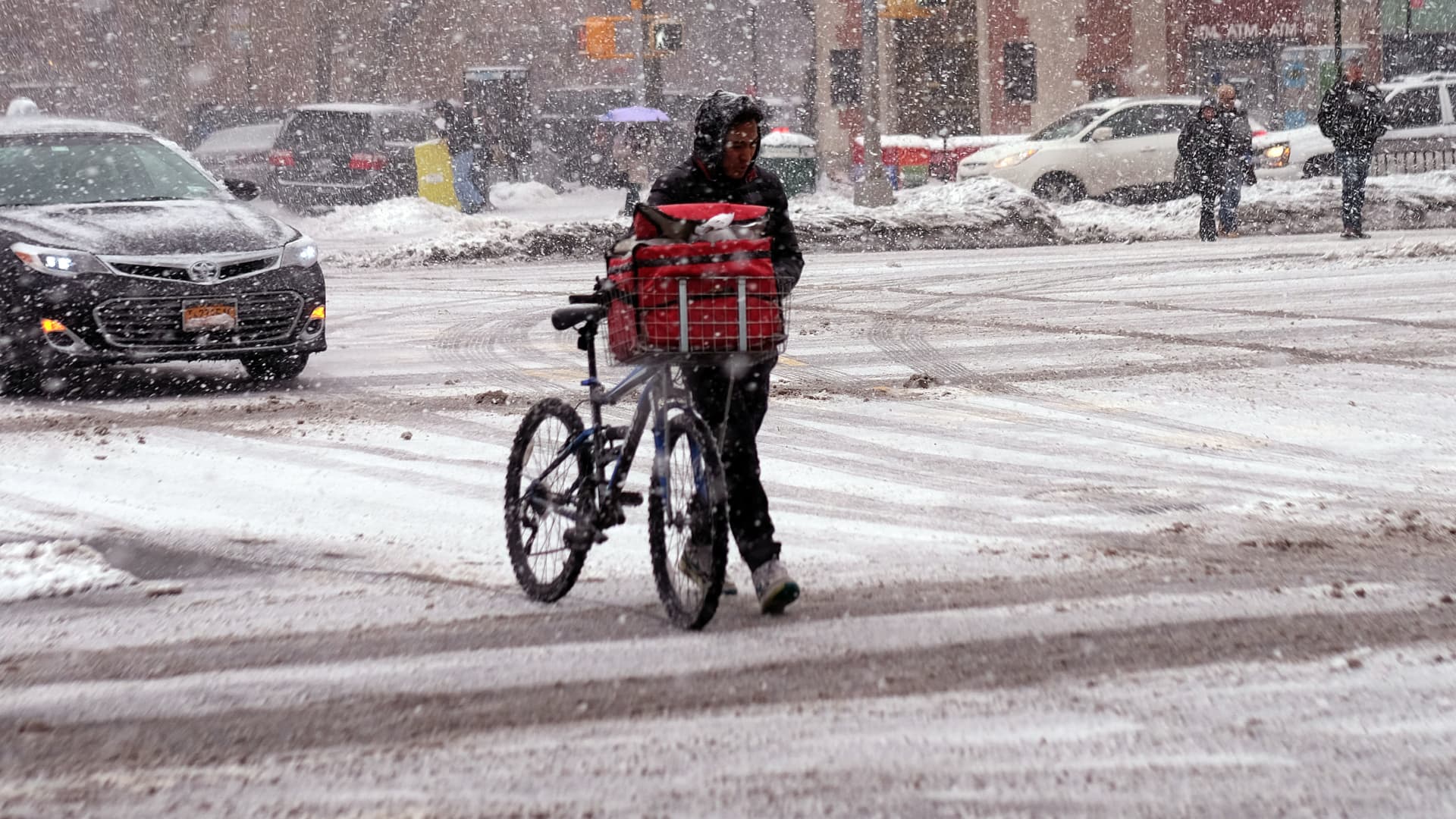Alexandrea Ravenelle studies the decline of the one-job era.
The sociologist chronicles the spread of the gig economy and the rise of “poly-working,” or working multiple jobs. Ravenelle points to research by the Federal Reserve that found 16% of American adults engage in gig work, and a recent report by H&R Block that showed that millennials work, on average, two jobs.
“It’s going to take two jobs to give you the same status of living that earlier generations could enjoy with one job,” Ravenelle said.
More from Personal Finance:
This strategy can help you meet New Year’s resolution goals
Student loan borrowers won’t face missed payments penalties
Will there be a recession in 2024? Here’s what experts say
Her new book, “Side Hustle Safety Net,” is based on interviews with nearly 200 workers, mostly in the New York City area, during the Covid pandemic. The book reveals the precarity of the gig economy during the best and worst times.
“There is no retirement when you do gig work,” Ravenelle said. You simply get tired and stop doing it or you get deactivated from platforms because you’re not moving fast enough.”
CNBC interviewed Ravenelle, an assistant professor at the University of North Carolina at Chapel Hill, this month about how the rise of the gig economy has affected workers. (The interview has been edited and condensed for clarity.)
Sharing economy became ‘more about making money’
Annie Nova: Your interest in this topic is somewhat personal. Formerly, you said you were a “super-adjunct.” What is that?
Alexandrea Ravenelle: Before I went back to school to get my PhD, way before I started teaching at UNC, I was an adjunct at a lot of schools. It’s not unusual for somebody to adjunct at four or five places at the same time, and just drive from school to school.
AN: When did the gig economy begin?
AR: The gig economy comes out of the sharing economy, and the sharing economy dates back to the Great Recession. We had a high level of unemployment, and people were looking to make do with less. Instead of going out and buying a drill to assemble your Ikea furniture, you just want to borrow one from a neighbor. But very quickly, that sharing economy becomes less about saving money and more about making money. A friend giving you a ride, because it’s going to be cheaper than a taxi, becomes all about, how many workers can we get driving and how much money can we make?
AN: What are some of the reasons people are increasingly working multiple jobs?
AR: There are a number of different reasons. Part of it is student debt; we have much higher levels of student loan debt with this generation than with past generations. We also see employers very deliberately try to keep somebody at 18, 24 or 27 hours a week, because once they hit 30 hours a week, then they’re on the hook for health insurance.
AN: How did the pandemic change the lives of gig workers?
AR: During early Covid, gig workers could get unemployment assistance for the first time ever. This was great for workers, and it shows what happens when workers get this money. Often, they use it to change their lives and really end up in a better place.
One college-educated worker had been doing Uber for four years, even though he thought it was going to be a short-term thing at first. He was able to use his unemployment assistance to stop doing ride sharing, and actually become a community habilitation specialist. Now he’s helping individuals with developmental disabilities to be more involved in society.
How gig workers ‘get stuck’
AN: How can people plan for their future or try to work toward financial goals with such precarious work?
AR: It’s really hard to save money doing gig work. Often, people think that they’ve saved some money, and then they get their IRS bill, and they realize they really haven’t saved anything. They’re going to have to pay their taxes, and then the employer’s share of Social Security and Medicare.
AN: What stops workers from leaving the gig economy?
AR: A lot of the workers I’ve interviewed believe they’re going to be doing gig work for a little while. But I’ve followed up with people who’ve been doing it for 10 years.
Workers get stuck.
After somebody’s been doing it for six months, employers look at them, like, ‘What have you been doing? How does that mean you’re going to now use your college degree in an office?’ And so it becomes very difficult for people to move beyond gig work. I’ve talked to elite gig workers who’ve been doing it for three or four years, and they say they can’t get job interviews anywhere.
AN: It feels like the gig economy and side hustles can really be romanticized, as a way for workers to have more freedom and flexibility. What does this get wrong?
AR: For years, the platforms have marketed themselves as a solution to stagnant wages, and for those simply needing additional money. In reality, the work is not always there.
And when you do make money, it looks like you might be making a decent amount, but you’re not factoring in the payroll taxes that a W-2 employer would be withholding or paying on your behalf. You’re not factoring in things like your time, or the delay when you’re sitting there waiting to do a food delivery.
You get one ping, and then maybe it’s 40 minutes before you get another delivery. That is all wasted time that the platforms don’t pay you for. They’re relying on is this kind of reserve labor force that’s willing to just sit on the sidelines waiting for work. It’s very much something out of Upton Sinclair’s, “The Jungle,” with people waiting outside the slaughterhouse gates, except people are waiting outside McDonald’s hoping they get a ping.
